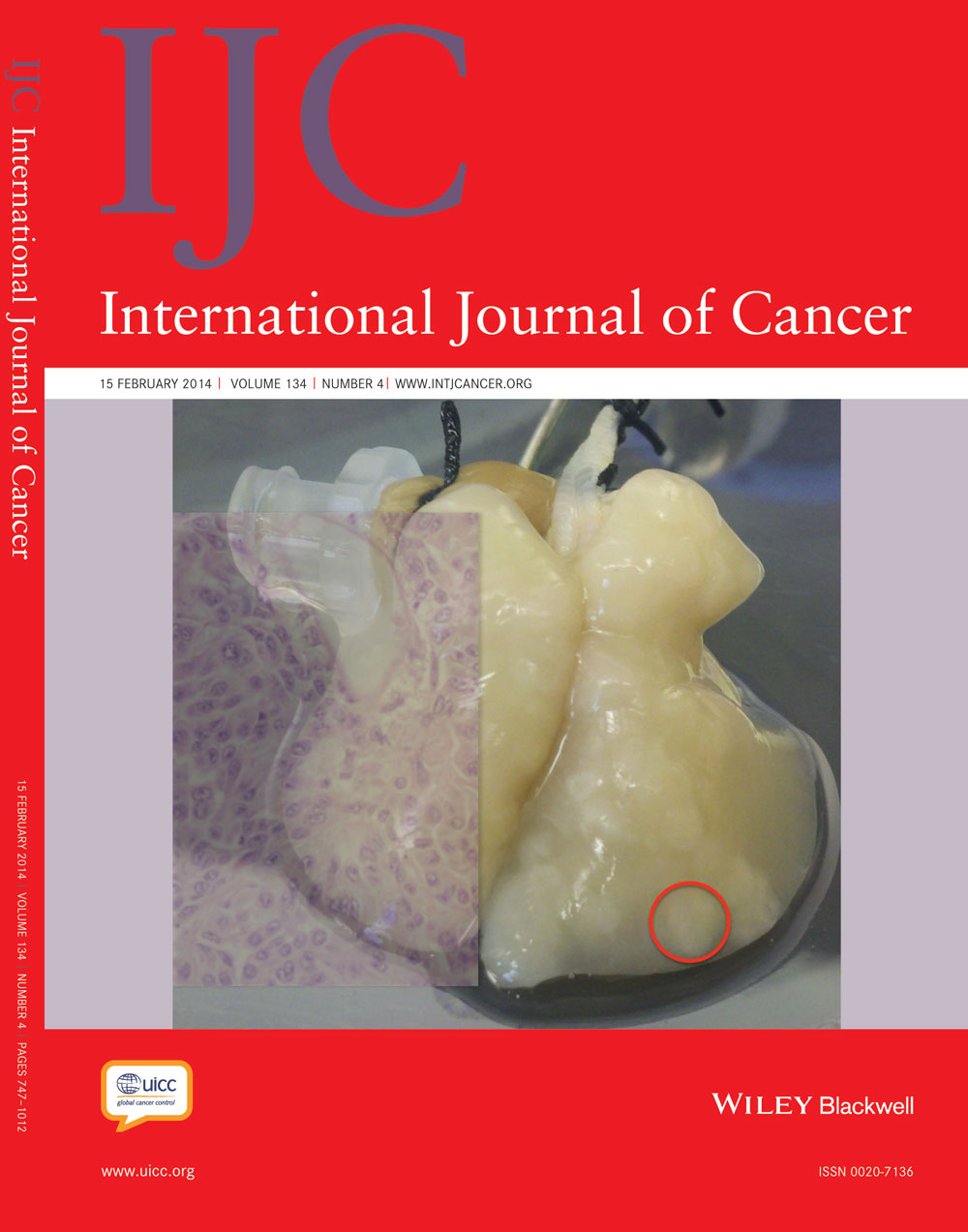miR-134 induces oncogenicity and metastasis in head and neck carcinoma through targeting WWOX gene
Conflict of interest: Nothing to report
Abstract
Head and neck squamous cell carcinoma (HNSCC) is a prevalent disease worldwide, and the survival of HNSCC has not improved significantly over the last few decades. MicroRNAs (miRNAs) have an important regulatory role during carcinogenesis. Our study investigated the pathogenic implications of miR-134 in head and neck carcinogenesis. The clinicopathologic implications of miR-134 in HNSCC were investigated using expression assays and the functional role of miR-134 in HNSCC pathogenesis was determined using ectopic expression, knockdown and reporter assay experiments. Xenographic tumorigenesis and orthotopic nodal metastasis were assayed in mouse models. In situ hybridization and immunohistochemistry were used to detect the expression of miR-134 and the WWOX gene in human HNSCC. The results indicated that miR-134 was upregulated in HNSCC tissues relative to control mucosa. High expression of miR-134 was associated with nodal metastasis and mortality of patients. Decreased plasma miR-134 levels after tumor ablation indicated a better prognosis for patients. Multivariate analysis showed that high miR-134 expression in HNSCC was an independent predictor of poor survival. Ectopic miR-134 expression significantly enhanced in vitro oncogenic phenotypes and the orthotopic growth and metastasis of HNSCC cells. miR-134 targeted WW domain-containing oxidoreductase (WWOX) gene and cell invasion enhanced by miR-134 expression was abrogated by ectopic WWOX expression in HNSCC cells. miR-134 expression was reversely associated with the WWOX expression in HNSCC tissues. Evidences from our study substantiated that miR-134 expression contributes to head and neck carcinogenesis by targeting the WWOX.
What's new?
Head and neck squamous cell carcinoma (HNSCC) is a prevalent disease for which survival has not improved over the last decades. Here, the authors found that miR-134 was highly expressed in HNSCC tumor tissues. High miR-134 expression was associated with nodal metastasis and mortality in patients and acted as an independent predictor of poor survival. Mouse studies confirmed the role of miR-134 expression in tumorigenesis and cervical lymph node metastasis. miR-134 was found to target the WWOX tumor suppressor in HNSCC cells, suggesting that anti-miR-134 or WWOX induction strategies could serve as a potential intervention against HNSCC genesis or metastasis.




